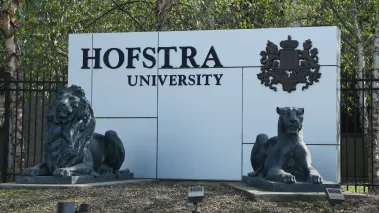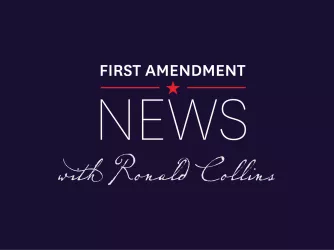Table of Contents
Hofstra hosts presidential debates. But do its students value free discourse?

Leonard Zhukovsky / Shutterstock.com
Lincoln Anniballi is a junior at Hofstra University and is a FIRE Campus Scholar.
Hofstra University is widely known for its engagement in politics and government affairs. In addition to hosting 13 presidential conferences which welcomed several former U.S. presidents to campus, Hofstra is the only university to host three consecutive presidential debates: in 2008, 2012, and 2016. Despite this extensive record of political engagement, in my first two years at Hofstra, I felt our campus was void of active political discourse. There is no Young Democrats club, the Young Republicans are mostly inactive, and students generally align with a center-left ideological perspective.
As a Campus Scholar, I was empowered by FIRE to design a survey to learn more about students’ views and knowledge on free speech and the First Amendment, research the history of polarizing expression on Hofstra’s campus, and engage with students through educational materials and activities. Throughout my meetings with administrators and interactions with students, I experienced nothing but respectful and productive dialogue. However, in reviewing the results of the survey, I identified some disturbing attitudes about free speech.

The first part of my project was to circulate a survey asking students their knowledge and views about free speech restrictions on and off campus. As a private university, Hofstra is not legally bound by the standards of the First Amendment, though the intellectual value that is provided by those standards is essential for promoting a free society and giving students a comprehensive education.
Of the sample of 126 Hofstra students, 55% said “hate speech” should be protected whether it occurs on or off campus, while 26.7% said it should be protected in public, but not on campus. A significant percentage of students, 46.4%, were satisfied with the administration’s current engagement in student speech. However, 34% wanted less or no regulation of speech. While a majority of students support continuing to protect “hate speech,” a significant portion are supportive of a more restrictive speech code. More restrictive codes could further suppress active dialogue.
Working as a FIRE Campus Scholar empowered me to make a significant impact in the pursuit of free speech and expression on my campus.
Respondents were also invited to provide their own definitions of “hate speech.” One student defined it as, “Something that offends the other person or that person’s thoughts.” Another said hate speech includes “Anything that goes against what people deem as socially acceptable.” These definitions are alarmingly vague: Were they written into policy, many protected forms of expression could be prohibited.
In addition to worrisome ideas about what constitutes hate speech, students have many blind spots in their knowledge of free speech standards and precedents. Students should be more thoroughly informed about their rights on campus and the standards and importance of free speech.
To target students’ knowledge gaps, I organized and dispersed educational materials across campus in person and via social media. Materials included posts and flyers, which debunked a definition of hate speech. A packet detailing the dangers of speech codes and students rights. And flyers explaining how students can get involved and advocate for the Chicago Statement. I also engaged students in conversation and several students who completed a post-discussion survey reported their perspective changed and they gained more knowledge about free speech.

Spotlight on Speech Codes
Reports
FIRE surveys speech codes at America’s top colleges and universities, providing readers with key data on individual schools and national trends.
In several sections of the student handbook, members of the Hofstra community are promised the freedom to express themselves. However, during my research into Hofstra’s speech codes and handbook, the FIRE team identified three “red light” policies, and five “yellow light” policies that hamper the students’ ability to speak freely. In order to protect the rights pledged to students and ensure an overbearing administration cannot use vague language to silence or suppress student concerns, Hofstra should make several policy adjustments.
Hofstra’s history is flush with moments of contentious speech and student protests. Most recently, in 2018, students petitioned and protested to remove a statue of Thomas Jefferson in front of the student center. Students against the statue were met with counter-protesters, all while the university maintained students’ Constitutional rights to free speech and assembly.
While the university maintains that it supports the rights of members of the Hofstra community, this does not guarantee that a future administration would do the same. Without making revisions to the student handbook, or adopting a free speech pledge like the Chicago Statement, Hofstra’s promises fall flat. When students can't be sure if their rights are protected, it’s no wonder political discourse is lacking — even at a school that hosts presidential debates.
Working as a FIRE Campus Scholar empowered me to make a significant impact in the pursuit of free speech and expression on my campus. My research and advocacy will continue to push the needle toward maximizing our freedom and protecting our rights.
Recent Articles
FIRE’s award-winning Newsdesk covers the free speech news you need to stay informed.

FIRE and coalition partners file brief rebuking the U.S. government for attempting to deport Mahmoud Khalil for his protected speech

FIRE and civil liberties groups challenge 'unconstitutional retaliation' against Mahmoud Khalil

Trump’s attack on law firms threatens the foundations of our justice system


